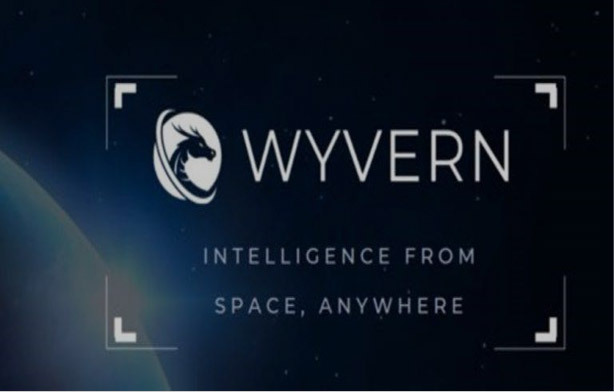|
|

|
  
Features
Update 2021/4/15 Teachers' Hub
SATELLITE TECHNOLOGY START-UP WYVERN TAKING EARTH
OBSERVATION INTO THE BUSINESS SPACE
By Suzanne Forcese
UPDATE: Original Article: U OF Alberta undergrad's project is out of this world
University of Alberta spin-off WYVERN is set to launch three satellites in early 2022 that will provide data to serve agriculture, forestry management, environmental monitoring, water quality management and other industries.

The Edmonton based Earth Observation start-up has signed a contract with AAC Clyde Space (Glasgow, Scotland) that will secure the rights to the data from three hyperspectral satellites that will be built and owned by AAC Clyde Space.
WATERTODAY had the pleasure of our ongoing conversation with Callie Lissinna, Co-founder and COO of WYVERN Inc.

Now in her final year of a Bachelor in Mechanical Engineering, Callie Lissinna
co-founded the satellite technology start-up Wyvern with some UAlberta alumni in 2018.
Wyvern’s Team includes: Chris Robson, Kurtis Broda, Kristen Cote, Vincent Sauer,
Taryn HaluzaDelay, Andre Ulliac, Ian Splinter and Adam Keith
The agreement was signed in anticipation of the launch of Wyvern’s first generation of satellites.
“As Wyvern is developing a proprietary technology to get high quality images for our first satellites, we wanted a partner who is experienced in building satellites. To hitch a ride. AAC Clyde can get us rolling. We are very pleased to work with them as a service provider.”
Wyvern’s technology, the DragonEye payload will provide higher-resolution imaging than would typically be possible from a cube satellite.
Already a proven technology with the use of drones, hyperspectral imaging taken from low-Earth orbit is a method of capturing Earth’s image data across many more spectrums than traditional optics. The problem is it is very expensive and less efficient than CubeSats in orbit.
“There are several environmental challenges facing us today and one of the ways we can combat the challenges is in understanding our planet. There are so many things we are unable to monitor. At Wyvern we are creating data to make that information more understandable,” Lissinna told WT.
It all started with the questions: “What if we could find a way to increase the aperture size of an imaging satellite on-orbit? How would this impact business in Canada and abroad?
“With DragonEye we can achieve significant improvements to spatial resolution, the number of spectral bands, and signal to noise ratio without increasing the satellite’s size. Combining DragonEye with a hyperspectral imager and launching a constellation of satellites allows us to deliver the exact data businesses need for actionable insights.”
Hyperspectral imaging is the process by which spectral (light) information can be gathered for each and every pixel within an image. The information can then be analyzed to determine the material, density, and chemical composition of anything in the camera’s view. The color resolution of Wyvern’s camera is so high that distinguishing one species of tree from another from their space-based platform is possible.
Wyvern will first offer the data to the agricultural sector where it will help optimize yield, detect changes in soil make-up and detect invasive plants and pests. Each satellite can perform on-board image processing and analytics such that useful information is streamed directly to a user’s device.
It’s all about understanding the health of our planet by breaking through the boundaries of technology.
suzanne.f@watertoday.ca
|
|
|
Have a question? Give us a call 613-501-0175
All rights reserved 2025 - WATERTODAY - This material may not be reproduced in whole or in part and may not be distributed,
publicly performed, proxy cached or otherwise used, except with express permission.
|
| |